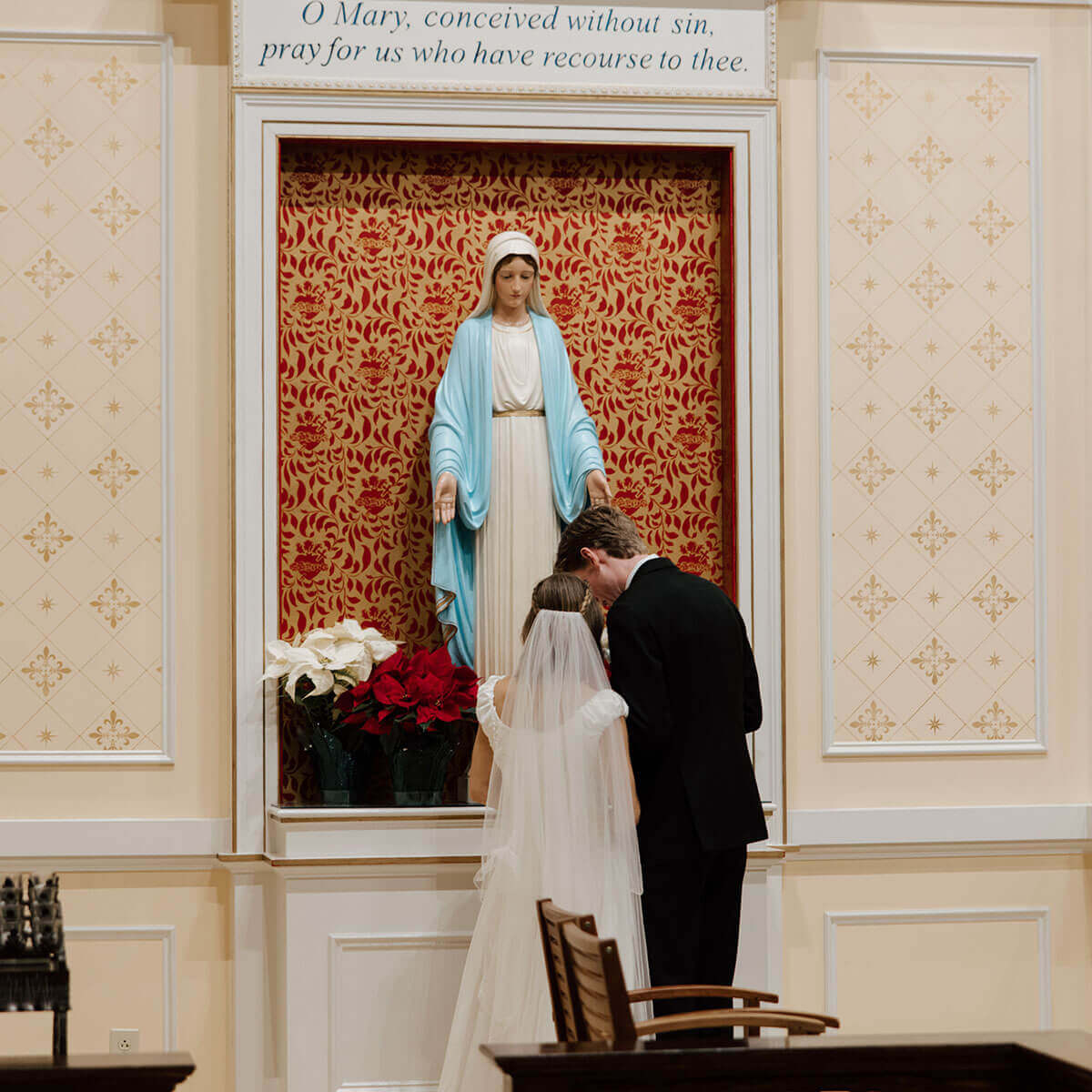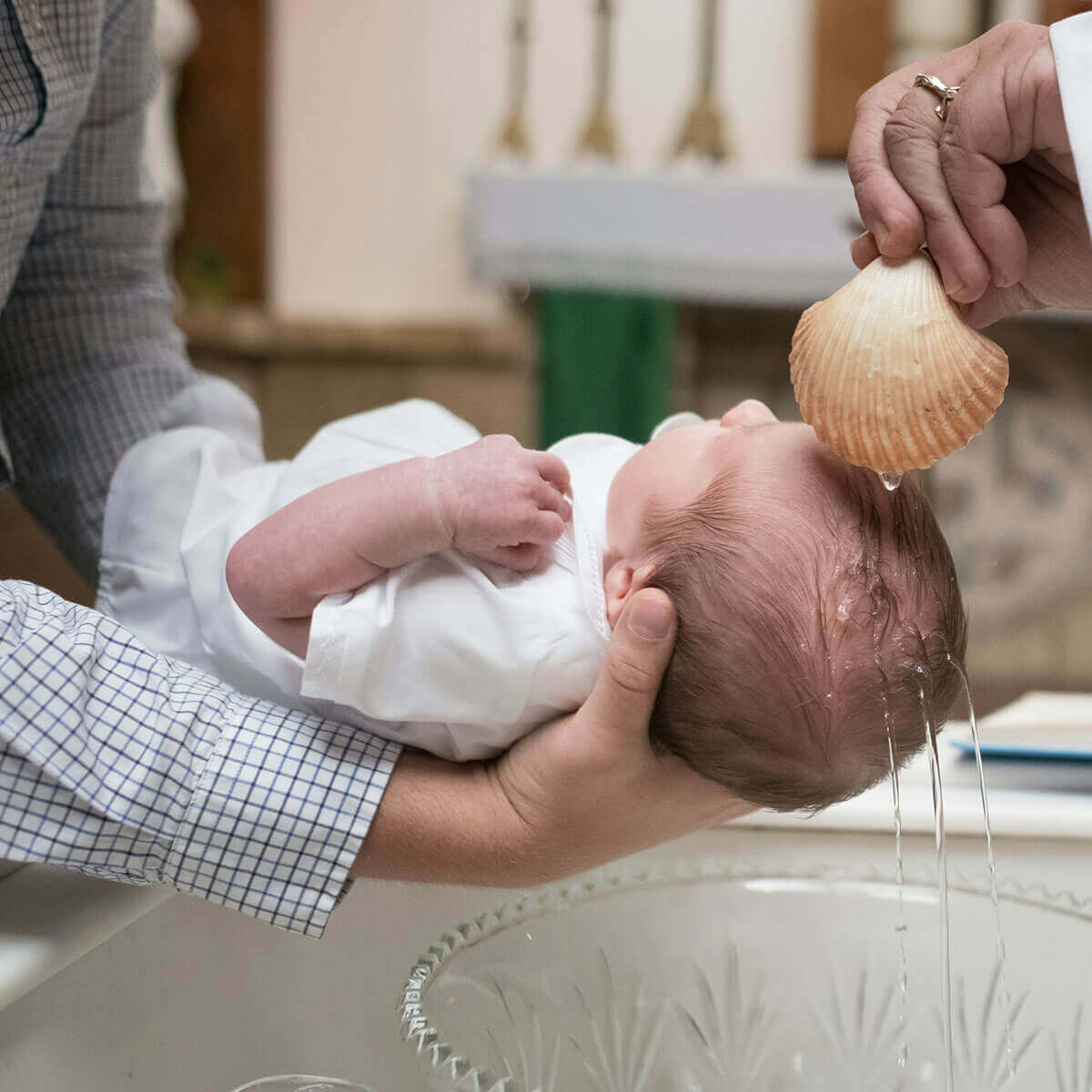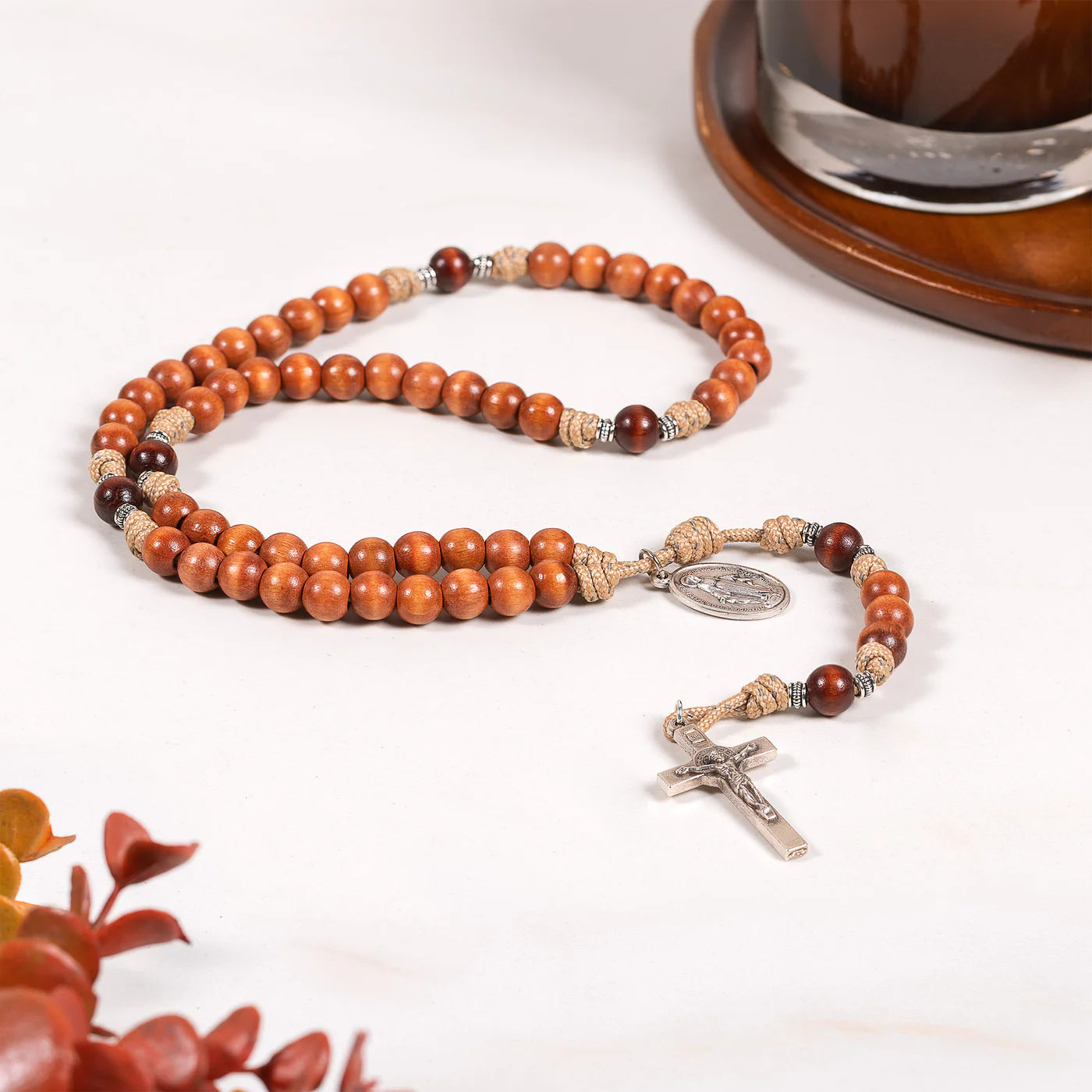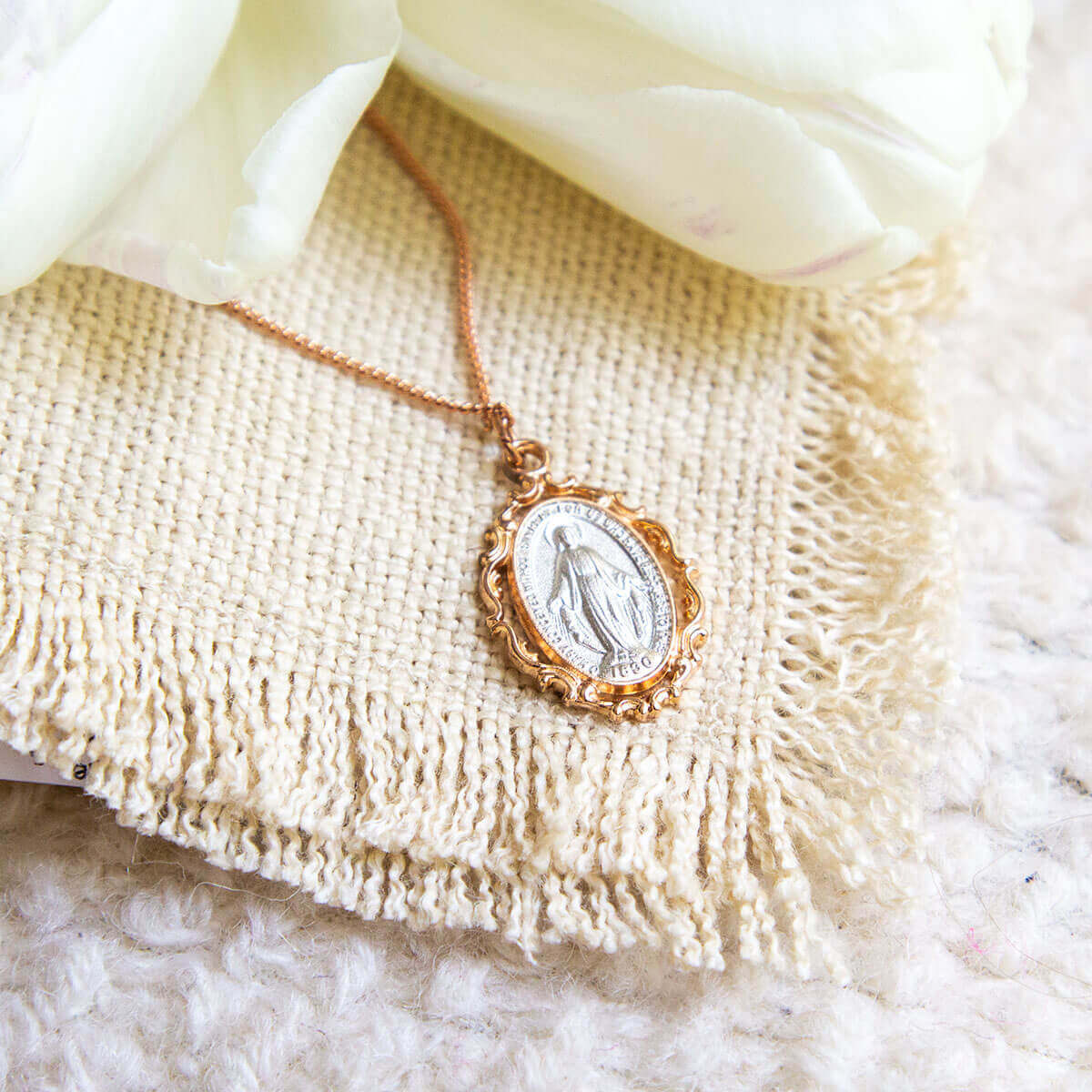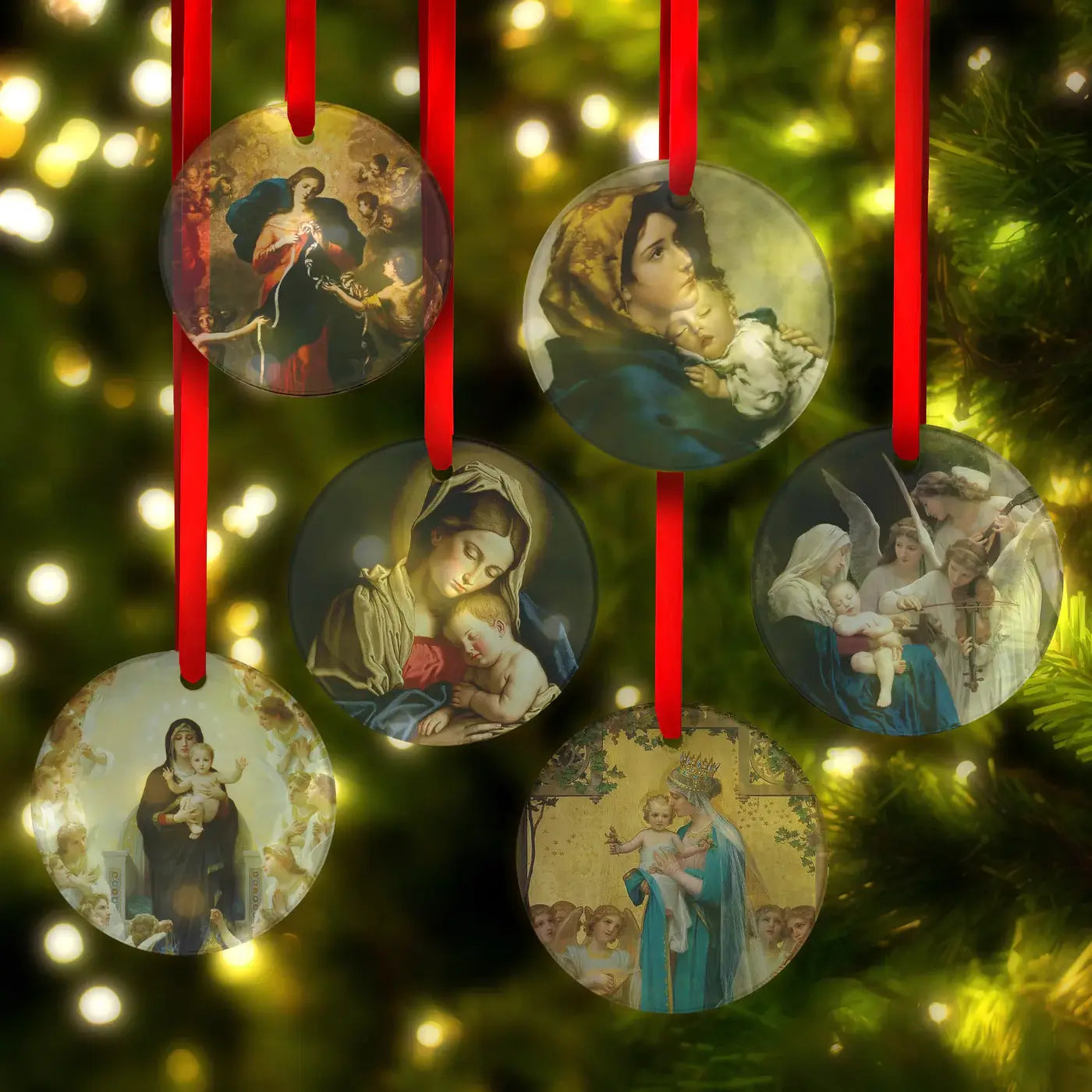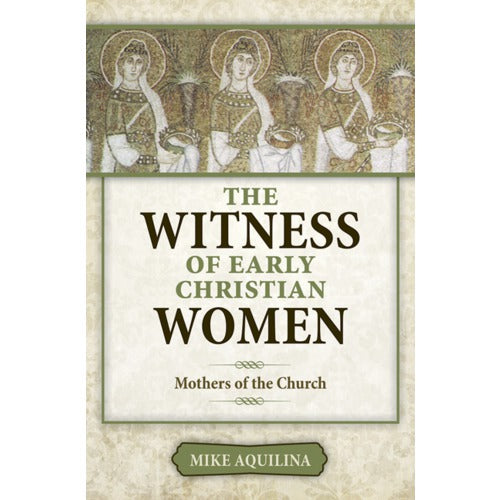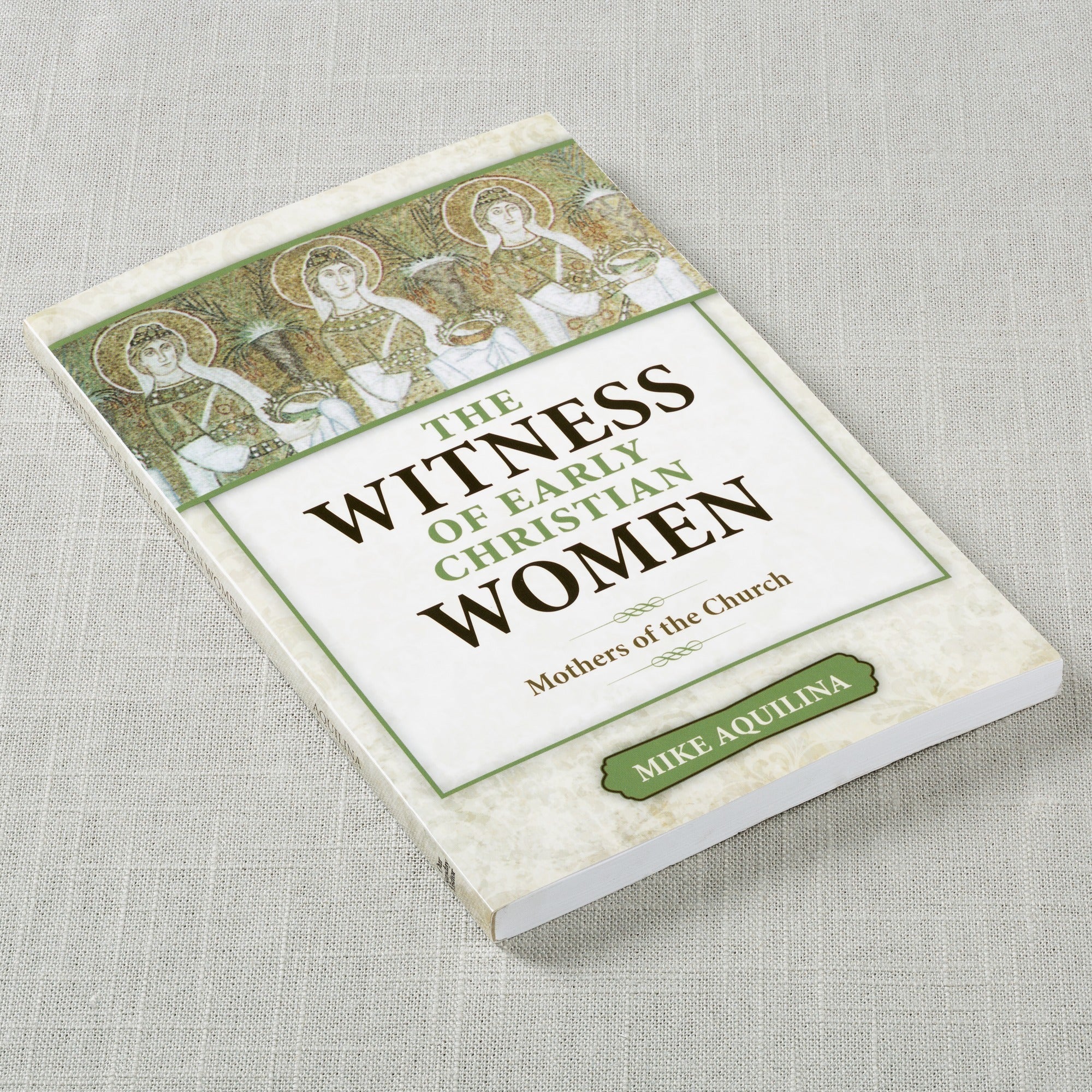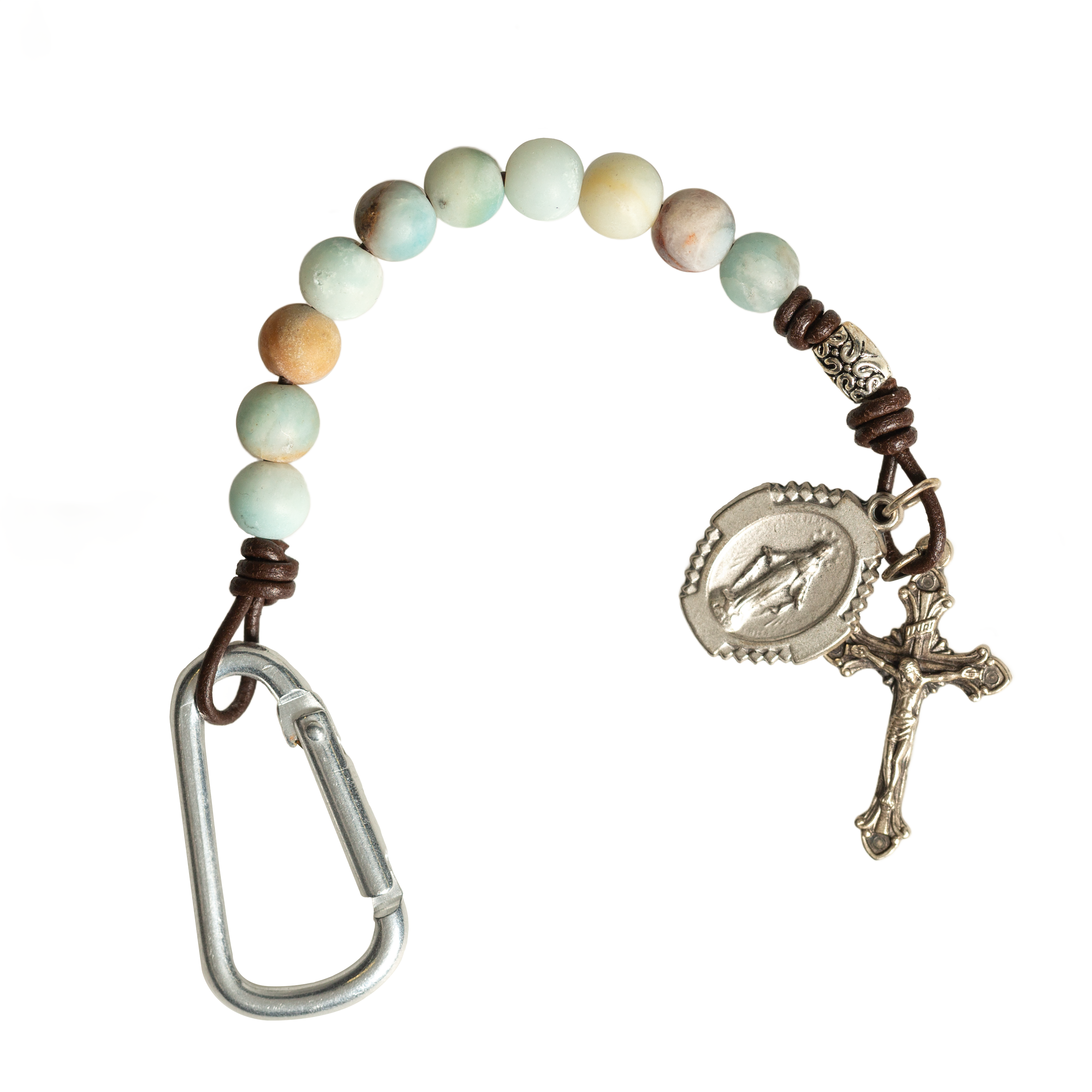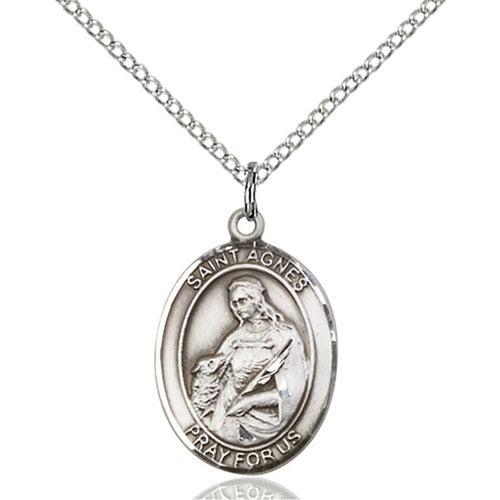St. Agnes—whose name means “lamb”—is nearly always depicted with a lamb in her arms as a symbol of her innocence. She was a virgin-martyr who was only about thirteen years old when she laid down her life for her faith and her purity in the 4th century.
Each year, the Basilica of St. Agnes-Outside-the-Walls welcomes two honored (and adorable) guests on the feast day of their patroness.
Two lambs, donated by the Trappist monastery of Tre Fontane elsewhere in Rome, are brought to the Basilica. They are carried in two baskets: one decorated with red flowers, symbolizing Agnes’ martyrdom, and the other with white flowers, symbolizing her purity.
These lambs are blessed, then sent to the Holy Father at the Vatican. He also blesses them, then entrusts them to the Benedictine Sisters at the Basilica of St. Cecilia in Trastevere. The Sisters care for them until just before Easter, when they are shorn of their wool.
The wool is then used to make the pallia. A pallium is the insignia of a metropolitan archbishop—that is, an archbishop with authority over his own diocese as well as others under its umbrella. The pallium is a circle of white wool that goes loosely around the neck, with a length hanging down in the front and the back. Six black crosses and three spinulae—pins—adorn it.

An illustration of a pallium by P-JR/CC BY-SA 3.0
The wool represents the archbishop’s role as shepherd and his call to imitate the Good Shepherd, Christ Himself, Who carries the lost sheep on His shoulders. The crosses remind him of the weight of his responsibility and the weight of the Cross that Christ bore. The three spinulae represent the nails that pierced the hands and feet of Our Lord. The pallium also represents the unity of the archbishops with the Holy Father.
After the pallia are made, they are kept in a silver box under the high altar of St. Peter’s Basilica, near St. Peter’s tomb. On the feast of Sts. Peter and Paul on June 29th, the pope blesses the pallia and gives them to all the new metropolitan archbishops.
You can learn more about St. Agnes and the early Church martyrs in the powerful book, The Witness of the Early Church Women! This insightful book demonstrates the radical nature of Christianity’s understanding of women and their roles, especially in a pagan society that viewed them as little more than property. The variety of women here is striking: poor widows, consecrated virgins, heroic martyrs, but also businesswomen, the wealthy, and an indomitable traveler on a world tour. Available today from The Catholic Company!




